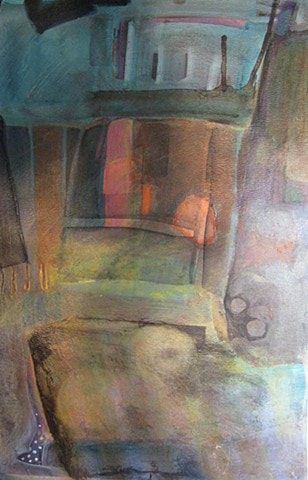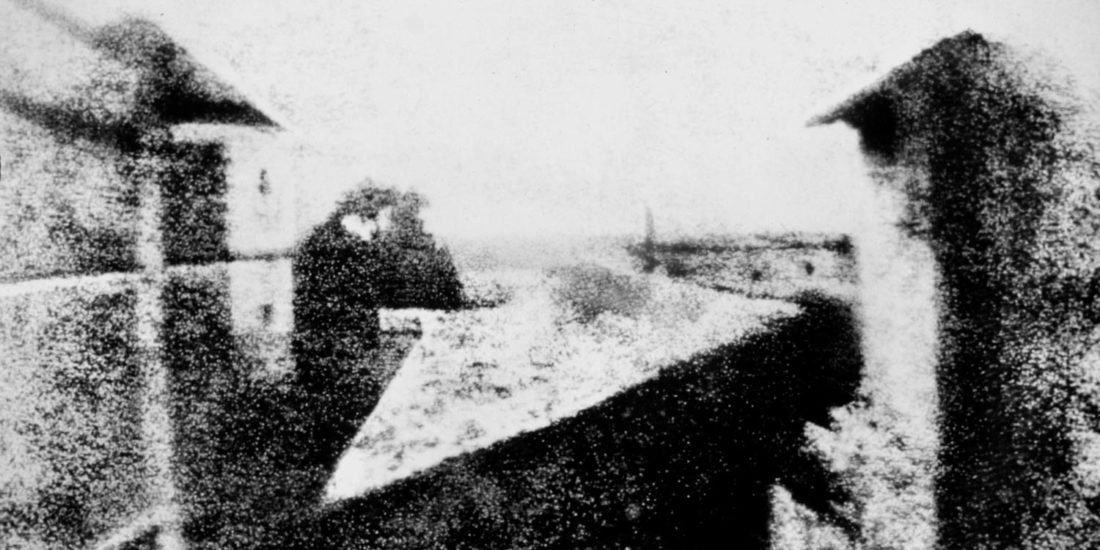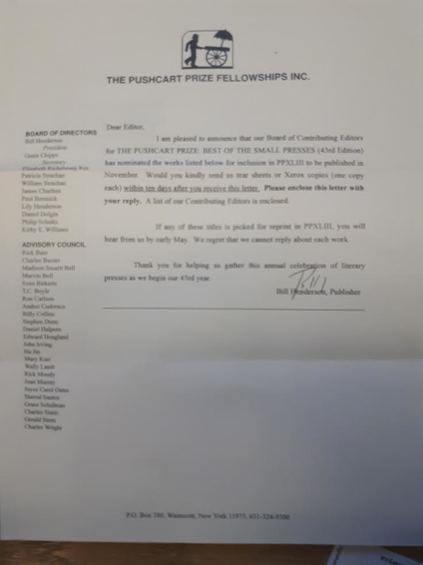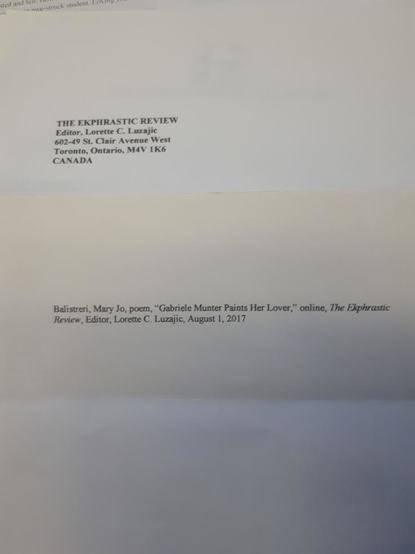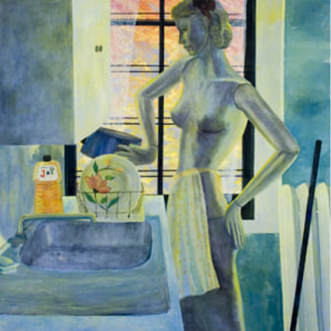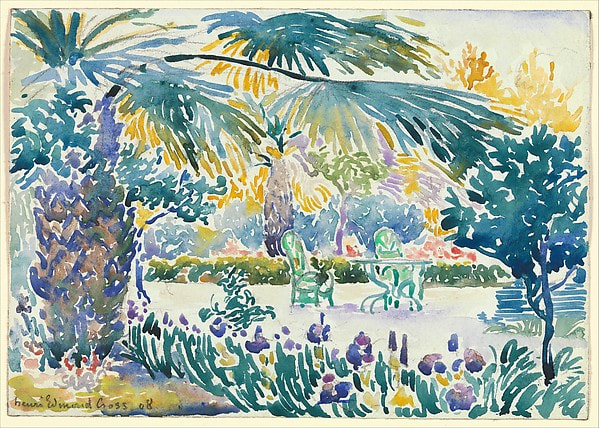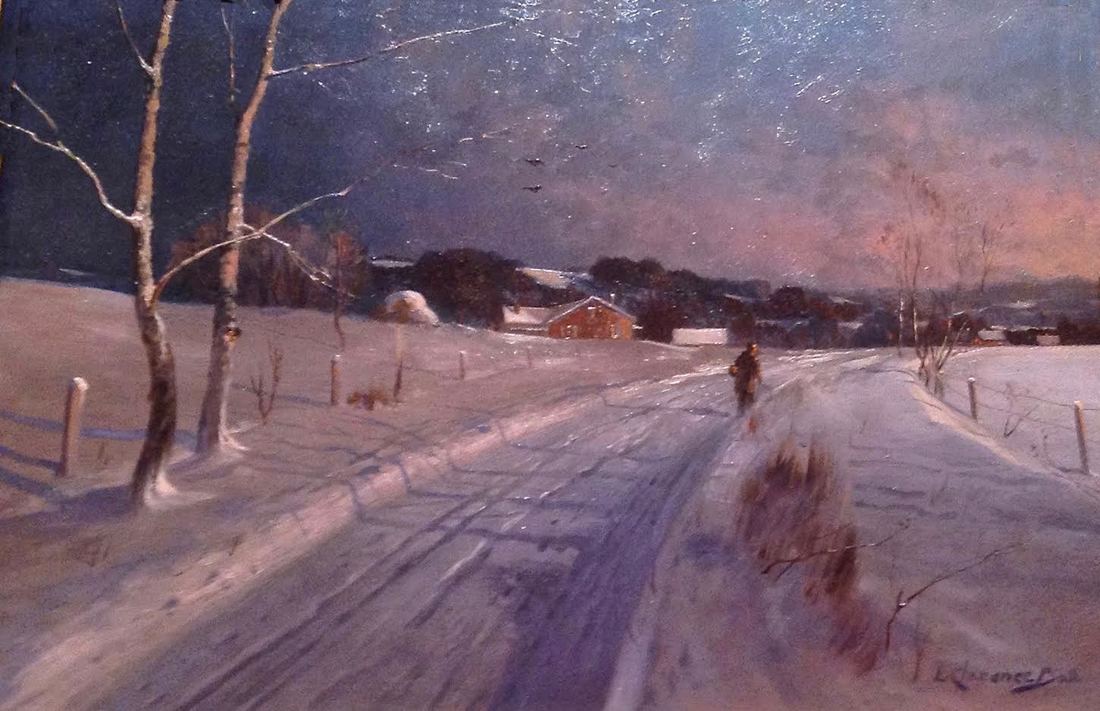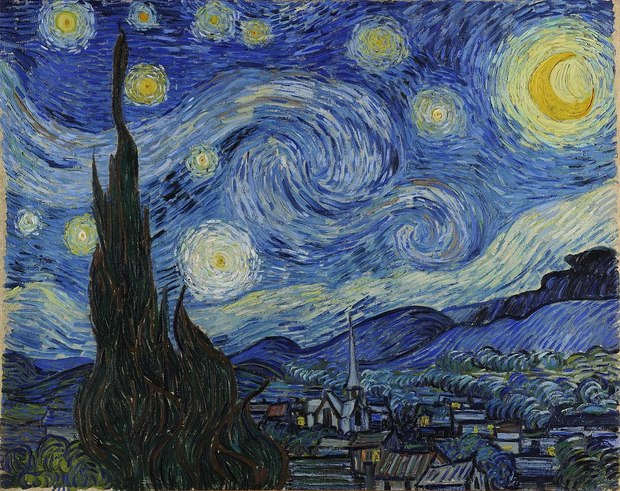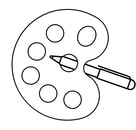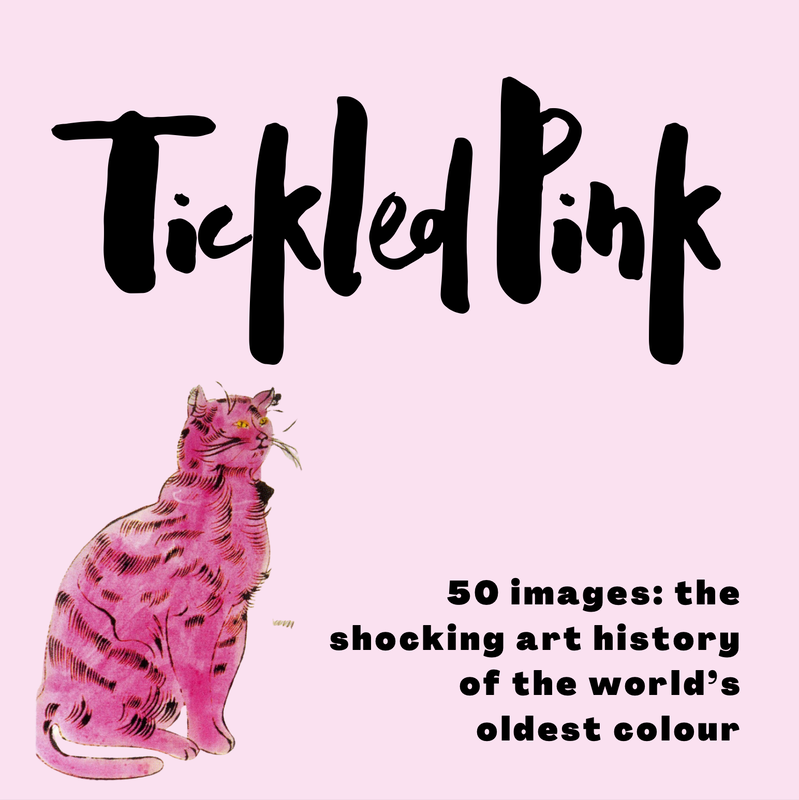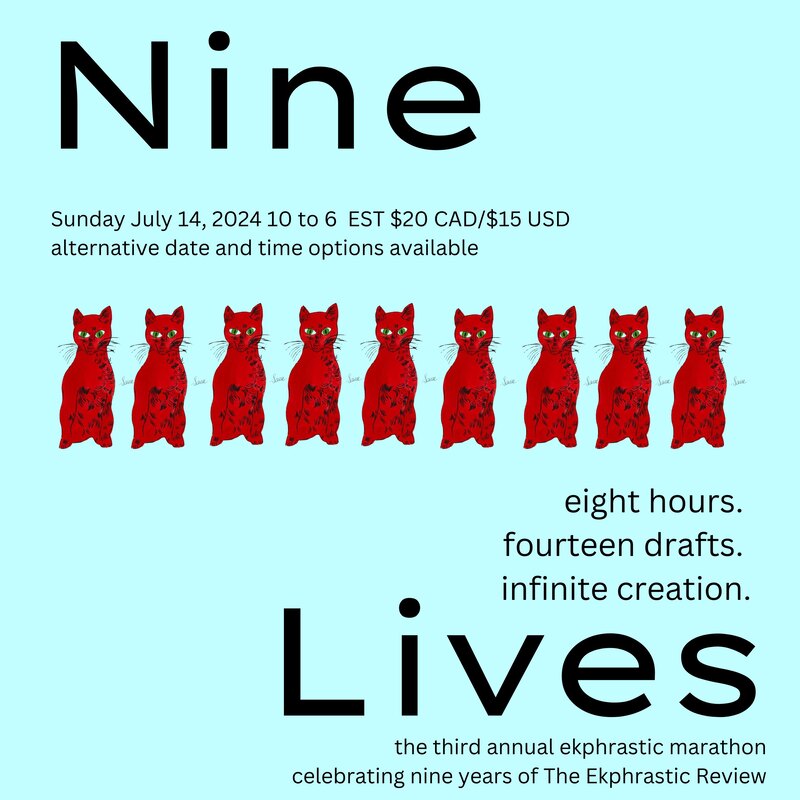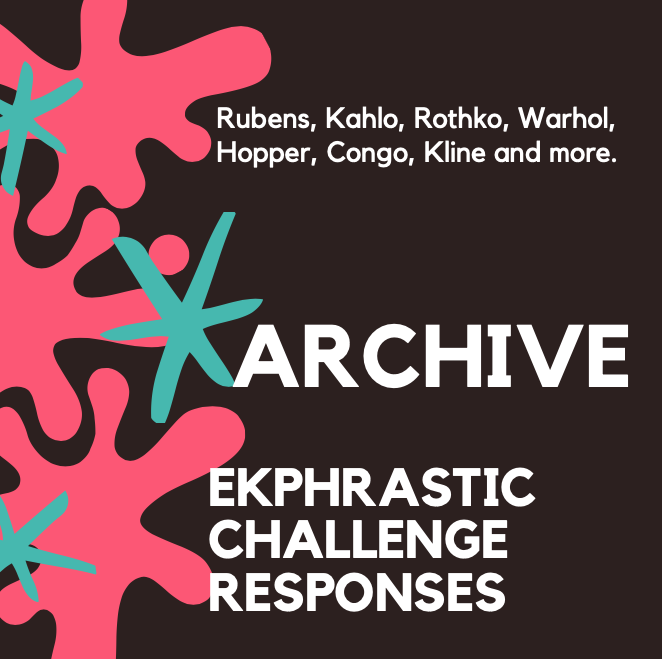|
Installation by Mona Hatoum I wired the colander into the toaster and the toaster into the lamp and the lamp into the shredder and the shredder into bed and the bed into the ladle and the ladle into the trash can and the trash can into the crib. Each attachment created a satisfying hum as it found its place in the structure. That sound meant the connection was sure. Nothing could unfix itself and fly off. Everything that had seemed flimsy before grew strong. Power ran through everything. The trees went into the sky, the sky into the moon, the moon into the universe. All I had to do was flip the switch and the whole apparatus would start working like a dream. I stood behind the electrified fence and knew I was home. Chris Bullard Editor's note: This illustration is a placeholder only. The poem, as it states in its title, was inspired by a Mona Hatoum installation called Homebound. Please click here to view the artwork. Chris Bullard is a native of Jacksonville, FL. He lives in Collingswood, NJ. He received his B.A. in English from the University of Pennsylvania and his M.F.A. from Wilkes University. Finishing Line Press published his poetry chapbook, Leviathan, in 2016 and Kattywompus Press published High Pulp, a collection of his flash fiction, in 2017. His work has appeared in publications such as 32 Poems, Green Mountains Review, Rattle, Pleiades, River Styx and Nimrod.
0 Comments
Tiny White Dots, Simmering Fringes
I'll take the smaller chair, back a bit. I want to absorb. Be invisible. Be. Soft and hidden is this song. Mine, and the song of my loved ones. Delicate and peering, we are everywhere, though we take the smaller chair, or the space beneath, the space behind. Look: we glow through, circles with centres, adaptable, camouflaged, inserting our subtleties. Shirley Glubka Shirley Glubka is a retired psychotherapist, the author of three poetry collections, a mixed genre collection, and two novels. The Bright Logic of Wilma Schuh (novel, Blade of Grass Press, 2017) is her latest. Shirley lives in Prospect, Maine with her spouse, Virginia Holmes. Website: http://shirleyglubka.weebly.com/ Online poetry at The Ekphrastic Review here and at 2River View here and at The Ghazal Page here and here. The First Photograph …or more specifically, the earliest known surviving photograph made in a camera, was taken by Joseph Nicéphore Niépce in 1826 or 1827. As a child, I would place icicles in my mouth and expect the rest of my day to taste blue. The cornflower sheen on the pewter plate of the first photograph ever taken reflects oil-slick light so well I cannot even tell what I am looking at: daguerreotype or the glass of a window punched out of its frame. No point-and-click, but a process involving mercury vapour and the right kind of light. To be first is to be fact: if it is cold enough, an icicle will fuse to the bluebells of fingers. Fact: I am iodine and I am sensitive. Another fact: the first polaroid I ever took was of the bruised sky and it developed slowly, the reactive chemicals and light sensitive grains blooming just like my favourite hydrangeas after winter. Kat Lewis Kat Lewis is a candidate in poetry at the University of Idaho where she has served as managing editor and reader for Fugue Literary Journal. Her work has appeared or is forthcoming in The Meadow, High Desert Journal, The Superstition Review, Santa Clara Review, and elsewhere. She lives and teaches in Moscow, Idaho. The Pushcart Prize panel committee has nominated Mary Jo Balistreri's poem, "Gabriele Munter Paints Her Lover," in The Ekphrastic Review!
http://www.ekphrastic.net/the-ekphrastic-review/gabriele-munter-paints-her-lover-by-mary-jo-balistreri Congratulations to Mary Jo! Housewife
Again and again Oy not joy see how the mannequin wife does the dishes you can position her just so nubile breasts and ice cream cone torso floral plates walnut shell eyes the light from the window moves across her like it moves across that chair over there Kelly Fordon Kelly Fordon’s work has appeared in The Florida Review, The Kenyon Review (KRO), Rattle and various other journals. Her poetry and fiction have been nominated for Pushcart Prizes. She is the author of three poetry chapbooks. The first one, On the Street Where We Live, won the 2012 Standing Rock Chapbook Award and the latest one, The Witness, won the 2016 Eric Hoffer Award for the Chapbook and was shortlisted for the Grand Prize. Her novel-in-stories, Garden for the Blind, was chosen as a Michigan Notable Book, a 2016 Foreword Reviews’ INDIEFAB Finalist, a Midwest Book Award Finalist, an Eric Hoffer Finalist, and an IPPY Awards Bronze Medalist in the short story category. She works for The College for Creative Studies, Springfed Arts and The InsideOut Literary Arts Project in Detroit. www.kellyfordon.com. Widow
Following the death of her husband, artist Susie MacMurray created a dress made entirely of pins. You’ll find me glittering in doorways, waiting, like a bride, to snag everyone’s eye. As a bride, I stood through countless fittings, knew the hopeful calculations of the measuring tape - now I’ve taken shears to dreams, watched beads of blood swell and break on the fingertips of those who re-stitched the seams. Watch me thread my way across the room. In my wake, a shivering train, the clicking grief of one hundred thousand adamantine pins. From a distance they’re glossy with light, lie like a pelt. Touchable. Come closer – held in the smooth weight of each head, a fleck of memory, the tight edge of a tear. Victoria Gatehouse This poem was first published in Mslexia. Victoria Gatehouse is a Yorkshire-based poets whose work has featured in numerous magazines and anthologies. She originally trained as a scientist before working on her MA in Poetry from MMU. Victoria is particularly obsessed by the garment sculptures and installations of Suzie MacMurry who’s work she first encountered during a poetry course at Manchester Art Gallery. She has a pamphlet forthcoming with Valley Press and does voluntary work as a Library Ambassador for Calderdale. Garden of the Painter at Saint Clair, 1908 Under the cool blue slats of palm trees, a table and two empty chairs; an invitation to come and sit in this luminous paradise, perhaps with morning coffee as the sun squeezes lemon light through the scaffolding, Or perhaps with a glass of wine in late afternoon as grapey shadows lengthen, stain the ground. There are purple and yellow iris in the foreground, colours laid down in long strokes, the way the foliage slices the light. We’re not there, of course, but we could be, even if it’s just the garden of our dreams. Here, paint has stopped time in its blue and gold tracks. And these flowers keep unfolding. Barbara Crooker This poem is from the author's book, Les Fauves, C&R Press, 2017. Barbara Crooker is a poetry editor for Italian-Americana, and has published eight full collections and twelve chapbooks. Her latest book is Les Fauves (C&R Press, 2017). She has won a number of awards, including the WB Yeats Society of New York Award, the Thomas Merton Poetry of the Sacred Award, and three Pennsylvania Council on the Arts Creative Writing Fellowships. A VCCA fellow, she has published widely in such journals as Nimrod, Poet Lore, Rattle, The Green Mountains Review, The Denver Quarterly, and The Beloit Poetry Journal. website: www.barbaracrooker.com The Blue Hour If sometimes I am silent when the sun has moved from the hill, and the breeze cools my skin like a swiftly drawn breath, it is as though the air has formed a frame around me and I am going back-- I am always going back-- to the farm, to the lonesome houses clumped around the creamery, to those winter nights when I walked home from chores, and darkness did not descend, but coalesced around me, a convergence of longing, youth and light. In those winter twilights, the future aching within me, every post and tree was honed into itself, and I’d look up to find a sapphire beginning to enclose me, and for one moment of merging, I would step into the crystal. Sonia Gernes Sonia Gernes taught Creative Writing and American Literature at the University of Notre Dame for thirty years and is now happily retired. She has published one novel and five books of poetry. Not Just Another Starry Night
After a seemingly ceaseless bus ride barreling down empty asphalt, hints of silver light on a ragged eastern horizon, piercing the coal dark of a cold winter night in the bowls of a crater called Ramon. Slowly slivers of glittering gold invade the cloak of sleeping desert. Suddenly a fully exposed orb of blinding fire illuminates our still slumbering bodies, aching and tired, hunched up against the bone-wracking chill that always precedes the welcomed warmth accompanying the sun's dawning. Our souls struggle to greet this new day and grasp this chance to better understand what drives us in our search for meaning. The sky fades into a clean, pristine Carolina blue, punctuated by cotton ball puffs floating above the rugged moonscape that envelopes us. Bright ochre yellow and matte beige compete with iron-rich red, dull black and muddy brown. We embark on our journey, hike, stumble, climb and claw, breathless by the time we crawl to the summit of a rampart, only leading us further down along paths of jagged-edged rocks and stones and pebbles that tear at our poorly-prepared footwear and sleep-deprived patience, down into the barren belly of this collapsed dome, where we sit to consider who we are, or strive to be . Endless trekking brings us to nightfall and a campsite clutter of pup tents, foam mattresses and cooking paraphernalia scattered on the sharp, inhospitable desert floor inviting neither appetite nor respite from the day's draining demands; yet, the skies above, cloudless and crystal clear, celebrate the culmination of our ordeal with fireworks of twinkling spots and slashes swirling in every direction. The heavens are awake with a universe so wide and high and far away that one cannot but wonder at this silent composition. Just another starry night for those who dwell here. But, for me a rush of awe and humility at my insignificant presence in this mute concert. Does it really matter who I am, or want to be? Is this how Van Gogh felt as he filled his canvas with twirling white and yellow, green and blue, red and black, dwarfing the dark foreground into irrelevance? Bob Findysz Robert (Bob) Findysz: Born in Chicago. Married with three grown children and nine grandchildren. Spent forty-some years teaching English to Israeli high school and university students, with periodic leaves-of-absence. Since retiring, after a lifetime of helping others write, now writing for himself. Nude Descending a Staircase, No.2
I am the Nude Descending a Staircase Carefully, gingerly, all my parts Shooting and fluttering off, Each to its own. It's all me, And yet the first does not recognize the last. The Nude Descends. She keeps on going. Each colour shades into the next. The echoes spread above her. Who is she? She is me, Once again in my element And then beyond it. Again. And again. She is not there, And she is there. She is echoes of herself. She is all the echoes, One at a time and all together, Crack of thunder containing all sound. Do you hear it? Here is what I want: I want that thunder recognized. I want those echoes seen. I want the shadings To meld and move into three dimensions. I want all the angles appreciated. I want all the frequencies registered On an instrument Delicate enough to catch it all, Strong enough to hold it all, Clear enough to contain it all With no pollution And no distortion. A clap of thunder Is just one sound. A nude descending a staircase Is just one person. Ann Bar-Dov Ann Bar-Dov is a former Brooklynite who has made her home in Israel. After almost 42 years, she can finally say that she writes both prose and poetry in English and Hebrew. |
The Ekphrastic Review
COOKIES/PRIVACY
This site uses cookies to deliver your best navigation experience this time and next. Continuing here means you consent to cookies. Thank you. Join us on Facebook:
Tickled Pink Contest
April 2024
|

